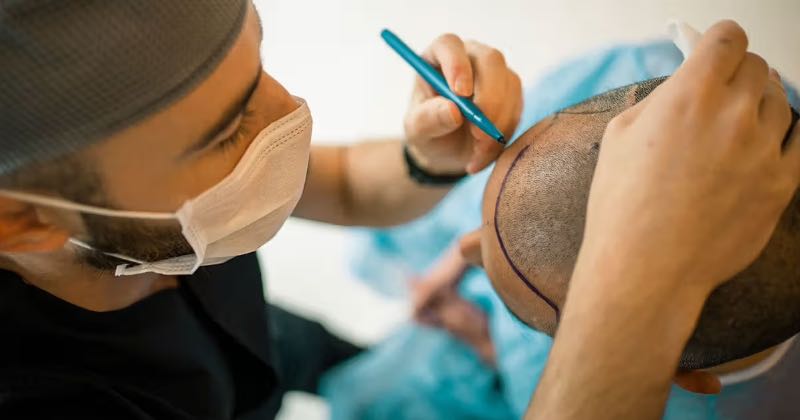In contemporary epochs, hair transplantation has ascended as a prevalent and attainable remedy for alopecia and hair diminution.
This intricate procedure encompasses the translocation of hair follicles from a donor locus to a recipient region.
Introduction to Hair Transplantation
This composition delves into the innovations within hair transplantation, elucidates the predominant techniques employed today, and scrutinizes the median expenses of this treatment across key nations such as the United Kingdom, the United States, and Canada, juxtaposing current prices with those from half a decade prior.
Modern Hair Transplant Procedures
The prevailing methodologies in hair transplantation today are Follicular Unit Extraction (FUE) and Follicular Unit Transplantation (FUT). The FUE approach entails the meticulous extraction of individual hair follicles, thereby minimizing cicatrices and convalescence duration. Conversely, the FUT technique involves excising a strip of the scalp from the donor area, subsequently subdividing it into smaller grafts. Each method possesses its respective merits and demerits, with the selection frequently predicated on the patient’s idiosyncratic requisites and the surgeon’s expertise.
Risks of Hair Transplantation
Despite its general safety and efficacy, hair transplantation is not devoid of certain risks and potential complications. Enumerated below are some principal hazards linked with the procedure:
- Infection: Albeit infrequent, infections can manifest at the transplantation site. Rigorous sterilization practices and meticulous post-operative care are imperative to avert this.
- Scarring: Both FUE and FUT techniques can culminate in scarring. FUE typically results in minuscule, dot-like scars, whereas FUT may leave a linear cicatrix at the donor locus.
- Bleeding: While some hemorrhaging is anticipated during and post-surgery, excessive bleeding may necessitate medical intervention.
- Swelling: Post-operative edema around the forehead and ocular regions is commonplace, generally subsiding within several days.
- Pain and Discomfort: Patients might experience discomfort at both donor and recipient sites, manageable with prescribed analgesics.
- Numbness: Temporary numbness or insensitivity in the treated zones can occur, typically resolving within a few weeks.
- Itching: The healing scalp may become pruritic. Scratching can dislodge newly transplanted grafts, hence it’s crucial to refrain from this.
- Shock Loss: Occasionally, transplanted hair may shed post-procedure. This phenomenon is usually transient, with regrowth transpiring within a few months.
- Unsatisfactory Results: There exists a risk that the hair transplant might not achieve the desired density or natural semblance, sometimes necessitating additional procedures.
- Allergic Reactions: Though rare, some individuals may exhibit allergic responses to anesthesia or medications administered during or subsequent to the procedure.
Comprehending these risks is vital for anyone contemplating hair transplantation. It’s paramount to engage in an exhaustive consultation with a qualified and seasoned surgeon to discuss potential complications and mitigation strategies.
Hair transplantation today epitomizes a fusion of technological advancements, augmented accessibility, and fluctuating costs. The United Kingdom, the United States, and Canada have observed a surge in the expenses of these procedures, mirroring enhancements in techniques and escalating demand. For those deliberating a hair transplant, it is crucial to conduct thorough research, select a reputable clinic, and be cognizant of the requisite costs and post-operative care. Hair transplantation continues to evolve, providing hope and promising outcomes for many grappling with hair loss.




